Art & Exhibitions
‘Everything on This Planet Is Endangered’: Why Artist Tino Sehgal Is Bringing His Ephemeral Performances to a British Palace
We caught up with the artist about his new work at Blenheim Palace.
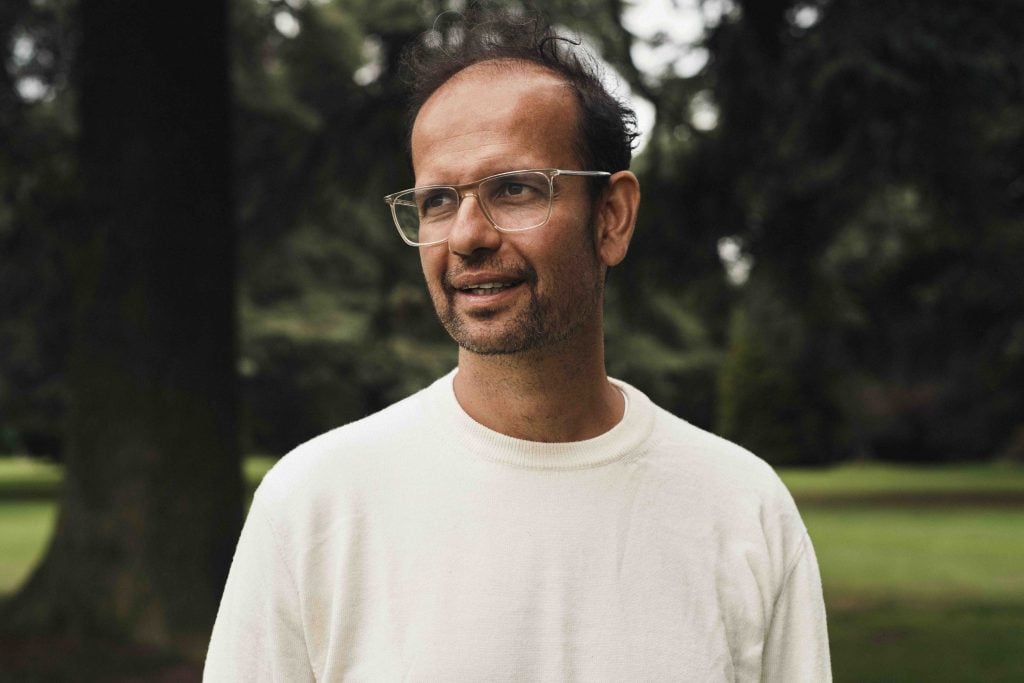
We caught up with the artist about his new work at Blenheim Palace.

Naomi Rea

Visitors milling around the Great Court at Blenheim Palace in Oxfordshire last Friday were caught off guard by the sound of a swelling chorus. A troupe of players who, moments before, had seemed like any other tourists there to discover the stately rooms and sprawling grounds of the Baroque countryside estate, broke out into a series of trance-like intonations: “wow, ooh, wow, ooh.”
For the audience invited to see the work of Berlin-based visual artist Tino Sehgal, the troupe’s movements around the courtyard might have evoked the nonsensical dadaist performance art of the interwar years. But I could also relate to the bemused expressions of unsuspecting visitors to the palace, who might more readily have related it to the carefully choreographed flash mobs that were popular marketing ploys in the early 2000s. Either way, it was all a bit weird.
Sehgal is revered in the art world for creating these kinds of scenes, which the 45-year-old artist calls “constructed situations,” designed to stir viewers out of passivity. His artistic practice eschews physical objects, relying on the human responses to these ephemeral live events. Once played out, there is no physical documentation of the work in the form of exhibition catalogues, video recordings, or photographs.
“My basic premise is: Can you make an artwork without making an object? So why would I, on a secondary level, then make a photograph?” Sehgal asked me, as we sat in a shade overlooking one of Blenheim’s manicured gardens.
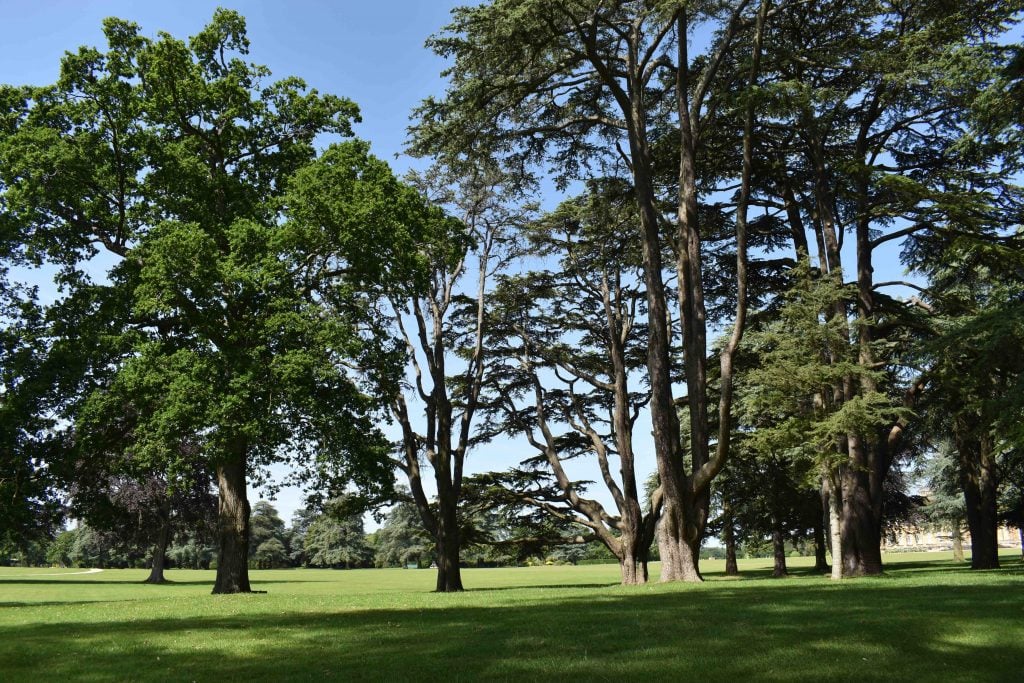
Blenheim Park and Gardens. Landscaping by Capability Brown. Courtesy of Blenheim Art Foundation.
Even without the wristbands identifying us, you could pretty easily tell the art audience from those who had just stumbled upon the work. Only the latter group (the larger one) reflexively whipped out their cell phones to take pictures. Sehgal has given up trying to control this particular impulse from the public. “I don’t mind it if it is for their private use,” Sehgal told me. “Society has changed. When my work first started, mobile phones literally didn’t even have a camera.”
Sehgal, who is of German and Indian descent, has been exalted by many critics as among the greatest artists of his generation. In 2005, he was the youngest artist ever chosen to represent Germany at the Venice Biennale, for which he sent performers dressed as security guards pirouetting around visitors to the pavilion chanting, “Ooh, this is so contemporary, contemporary, contemporary!” He later won the Golden Lion for work included in the 2013 biennale.
His current exhibition, on view through August 15, was staged by the Blenheim Art Foundation, and blends elements of some of his past works with new scenes designed specifically to respond to the environment of the palace grounds. Sehgal was introduced to Blenheim in the spring because he was looking for a maze to site a project, one of the first initiatives organized as part of veteran gallerist Marian Goodman’s nomadic exhibition program after closing her permanent London space, Marian Goodman Projects. As chance would have it, the art foundation did not have an exhibition scheduled for this summer, and Sehgal was suddenly invited to make a much larger project than he had initially envisioned, unfolding across the vast grounds of the estate.
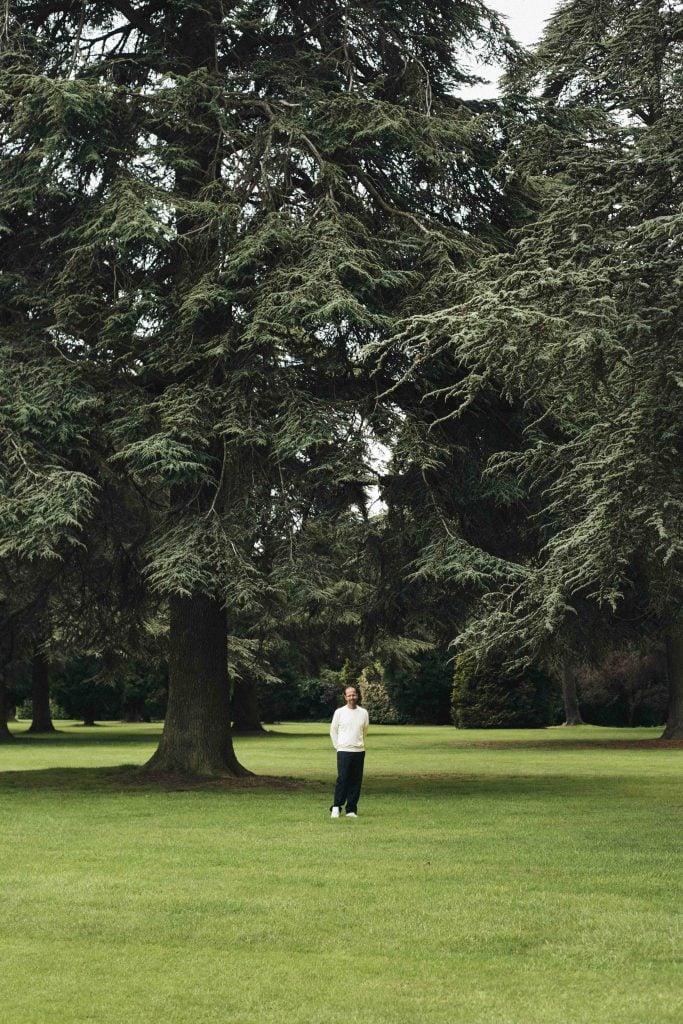
Tino Sehgal in the grounds at Blenheim. Photo by Edd Horder. Courtesy of Blenheim Art Foundation.
“It was really spontaneous,” Sehgal told me. “But Michael [Frahm, director of Blenheim Art Foundation] was adamant that he wanted to do it now after corona, and it made sense for me after we have been deprived of human interaction for so long.”
Both Frahm and Sehgal’s main producer, Louise Höjer, were up for the “sports-like challenge” of pulling off the exhibition in just a few months.
“After a long year distanced one from another, Tino’s work feels more relevant than ever: bringing bodies together in space and calling attention to the fleeting, immaterial magic of human connection,” Frahm wrote in his introductory statement.
Höjer traveled to the U.K. ahead of Sehgal and scouted 52 amateur participants from the local area, ranging in age from 16 to 74, to take part. A few of Sehgal’s regular dancers, in-demand contemporary stars from Brussels and Berlin, also traveled to take part.
Then there was the matter of organizing an exhibition based on human interaction for the age of social distancing. Although it was mostly staged in an outdoor setting, they decided it would be best for the players approaching visitors to don masks and keep their distance, as a sign of respect and to help people feel safe.
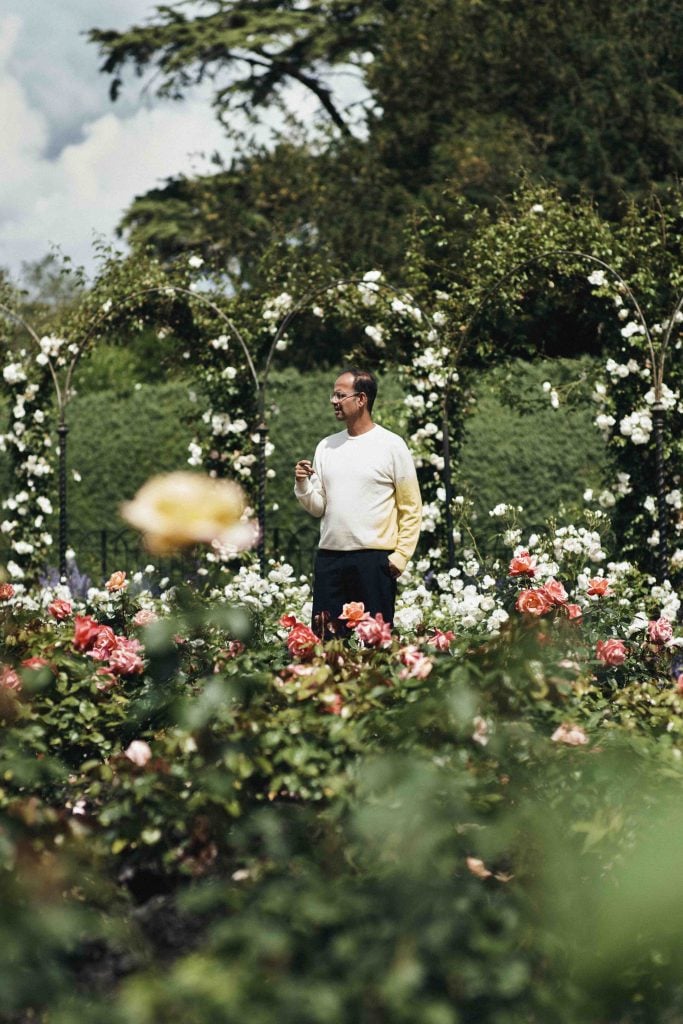
Tino Sehgal in the Rose Garden at Blenheim. Photo by Edd Horder. Courtesy of Blenheim Art Foundation.
The roving troupe of dancers intermittently swarmed around the visitors to the art foundation, shepherding us throughout the grounds to where other works materialized. Outside, in the secret garden, a young girl serenaded passersby, an iteration of Sehgal’s 2006 work, This You. Inside the grandiose Great Hall, amid classical statuary including Venus and Bacchus, an intertwined couple writhed on the floor for Sehgal’s Kiss (2002), re-enacting kiss scenes from famous works of art throughout history, from Auguste Rodin’s embracing nudes to Jeff Koons and Iona Staller’s more provocative poses.
A more recent work, This Joy, conceived last year for the Kunsthistorische Museum in Vienna, occurred next to a small fountain. Players sang out a bizarrely electric scat version of Beethoven’s Für Elise, which built to a crescendo that was theatrically synchronized with a burst of water springing from the fountain.
The most affecting parts of the exhibition were the works specifically designed to respond to the palace grounds. Across the vast lawn in front of the palace, on the majestic water terraces, and nestled in the rose garden, players almost blended into the landscape. If you weren’t paying attention, your eye might have glossed over them as picnickers on the lawn or even perhaps more delicate shrubbery designed by Capability Brown. If you got close enough to one of the players, they might approach you and share details about their lives.
This story-telling component of the new work, titled This Element, borrows from Sehgal’s These Associations, a work first shown at Tate Modern in 2012. The stories shared by the participants are answers to a number of prompts from the artist, such as: When have you felt a sense of arrival? What is something you are dissatisfied with in yourself? What are the personality traits of somebody you admire? But the artist does not control what intimacies they share beyond this.
When I summoned up the courage to open myself up, and gave permission with my eyes for someone to approach me, it was a local bus driver, who told me about a regular passenger of his, an elderly gentleman who battles his own physical decline to ride the bus to go and visit his niece every Thursday. The story was not particularly emotional, but after a year and a half of being starved of interaction with friends, let alone strangers, I was in a very raw emotional state. I was embarrassed when tears welled up in my eyes.
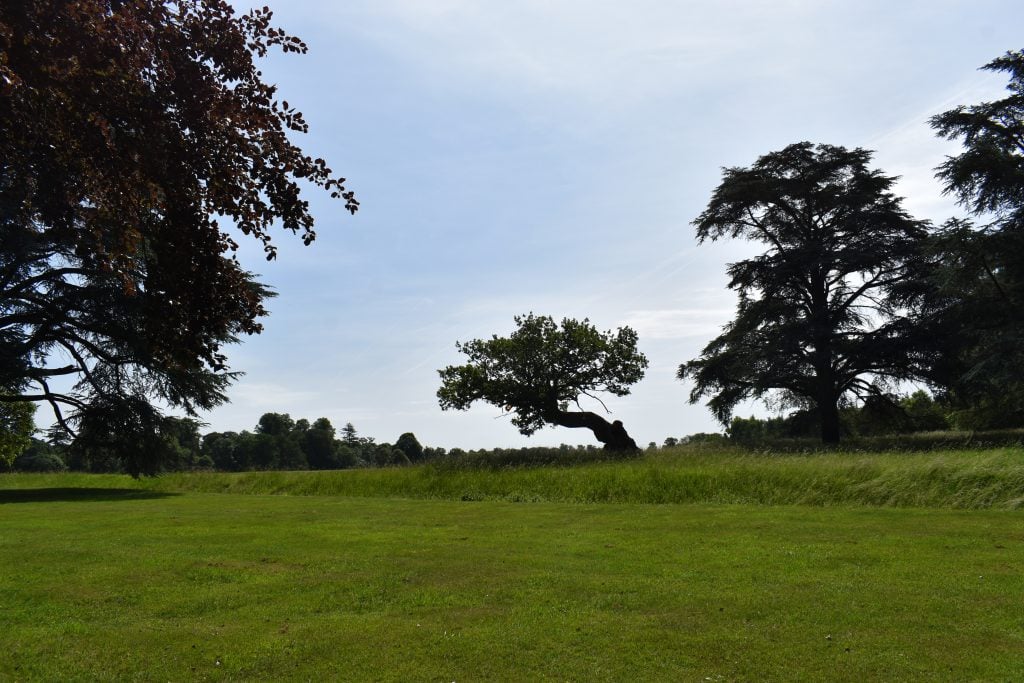
Blenheim Park and Gardens. Landscaping by Capability Brown. Courtesy of Blenheim Art Foundation.
Sehgal’s art tends to trigger this kind of reaction. And despite his forbearance of objects, he does actually sell his work—which he does through oral agreements with no paper trail. The rights to stage his situations have sold for six figure sums to museums including the Hirshhorn, MoMA, and the Guggenheim, as well as many private collections.
“There is not a huge [market] but when people are interested, the fact that we do it with an oral contract is not really an issue,” he said. “If anything, it is maybe something that they find attractive.” If buyers want to show it, they need to give a six-months heads up, and trusted associates of the artist will be dispatched to set it up.
I asked him what he thinks about the possible legacy of his work given that it is so ephemeral. What happens when he’s gone, and the chain of knowledge dilutes the work further and further from its original iteration? But Sehgal is not worried about obsolescence. He intentionally structures his situations like a game, with basic rules of play, and the interruption of chance encounters means that no two situations are exactly alike anyway. He could get deep into the theory behind this, but he offers a helpful sports analogy.
“Nobody is worried that beach volleyball would cease to exist because you have got the rules,” he shrugged. “People can play it better or worse, but it is still beach volleyball.”
Besides, material objects face obsolescence too. Paintings can burn up in a fire, or be eaten by pests, or deteriorate through age. “Somebody attacked a Barnett Newman at the Stedelijk Museum once—that can happen,” Sehgal pointed out. “I think everything on this planet is, in that sense, endangered and can deteriorate. And with art objects we make a big effort to ensure that they don’t… . So I think it is just a question of effort, finances, will, [and] planning decisions.”
He recalled a particularly important exchange he had with a conservator during his early days in the art world, who pointed out that most of the objects that populate museums would not exist today without careful conservation and restoration efforts. “We don’t really conserve paintings, we produce them,” the conservator said. “When a painting has been restored three times, is it the same painting?”
In that sense, Sehgal’s object-less work doesn’t seem any less ephemeral. He invited me to look further back into the past. “We have the tendency to think that objects are what remain or persist, but if you go back to antiquity, it is Plato,” he said, and “ideas that continue to exist.”
Tino Sehgal is on view at Blenheim Art Foundation through August 15.